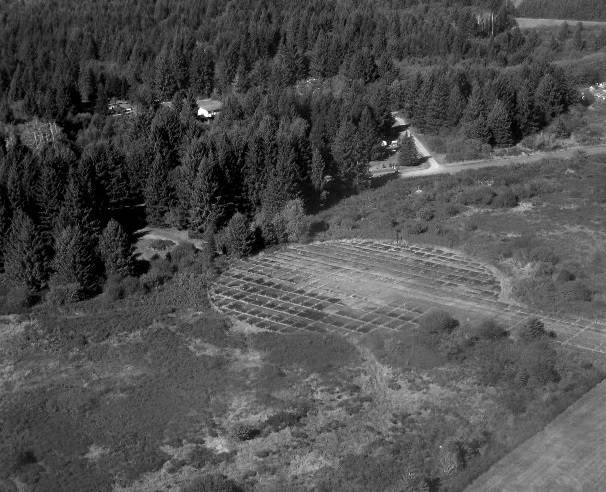By Christi Baron
Forks Forum Editor
Located about 10 miles west of Forks the Quillayute Airport is a unique facility with an interesting past. Constructed around the time of World War II, it served as a Navy facility for blimp patrols monitoring the Washington coastline, guarding against Japanese invasion. After the attack on Pearl Harbor the Army also had a presence there building barracks and other structures. After the war, the strip got little use, but in 1966 it would be the weather that would bring about new activity at the former base.
In August of 1966 the relocation of the weather station from Tatoosh Island, where surface and upper air observations were monitored, to the former Quillayute air base gave Bryce Tilton a change of scenery. Tilton remembers working shifts of 10 weeks on the desolate Island and then several weeks off, even when the duration of the shift was reduced to five weeks on and several off, it was difficult to find individuals willing to work in such remote surroundings. Tilton remembers one close call on the tiny island with a weather balloon. A strong east wind was blowing and just as it was to lift off it became evident that it was going to blow right in to the light house also located on the island. Quick thinking halted the release of the balloon and disaster was avoided. Tilton, although long retired from his weather recording days, still likes to watch the weather channel “quite a bit” and as far as climate change goes he said “I do have an opinion on that, there have been several ice ages, and maybe there has been global warming before.”
The late James Hansen worked at the Quillayute weather station from 1967-1969. He recalled things usually being quiet as the round the clock shifts of technicians collected their data that was then sent via teletype to meteorologists at the Seattle Weather Service Forecast Office. Hansen said that the Quillayute location was still the wilderness causing the occasional pilot that was landing to first do a fly over to make sure no elk were on the runway. One time Hansen left the door open on an evening shift, he had taken his black lab April to work with him, when suddenly a wild animal came through the door, it was just a mountain beaver, but April protecting her master made short work of the wayward beast. Probably the strangest incident that Hansen was witness to was on a 3-11 a.m. shift when a bloodied man came through the door needing help getting his friends out of a car. It seems they had tried to “fly” a Corvette down the runway and when they “took off” they had landed in a ditch.
The Chamberlin family came to Forks from Nome, Alaska, in 1969. Sherry Chamberlin Long remembers the family moved a lot for her father Art’s job as an electronics technician, with the family sometimes living in government housing. When they got to Forks they had a “real house” which is now the Miller Tree Inn. Long recalls going to work with her Dad on many occasions and she especially liked watching the release of the weather balloons.
Weather balloons are still released twice daily at the Quillayute Airport but data is collected by computers now. The radiosondes, as they are called, are tethered to helium-filled weather balloons measuring about six feet across at launch. As they rise, the balloons slowly expand until they burst, typically at an altitude of over 100,000 feet and after expanding to a diameter of about 20 feet.
A small radio dish at the launch site tracks a transmitter aboard the radiosonde, which has instrumentation recording temperature, humidity and barometric pressure. This information is relayed almost immediately to the National Weather Service network. Wind is determined using the drift of the position of the unit by GPS.
While humans no longer compile weather information at the Quillayute Airport it remains an important point for gathering data that effects weather forecasting here and across the nation.



